Huawei has pulled out all the stops with their new P20 range of smartphones. The P20 and P20 Pro look gorgeous and come packed with features, including the first triple-lens smartphone camera on the P20 Pro, with both phones ascending to the top of DxOMark’s camera rankings.
There’s been a confident swagger about the company as it goes about its business in Paris. We’ve been assured multiple times by company representatives that there’s something significant coming at Tuesday’s launch event, and they know full well that they’ve placed us in a city full of notable sights and sounds just waiting to be captured by the new camera technology on their phones.
That confidence seems justified, with today’s event taking place at one of the city’s most prestigious event spaces – the Grand Palais.
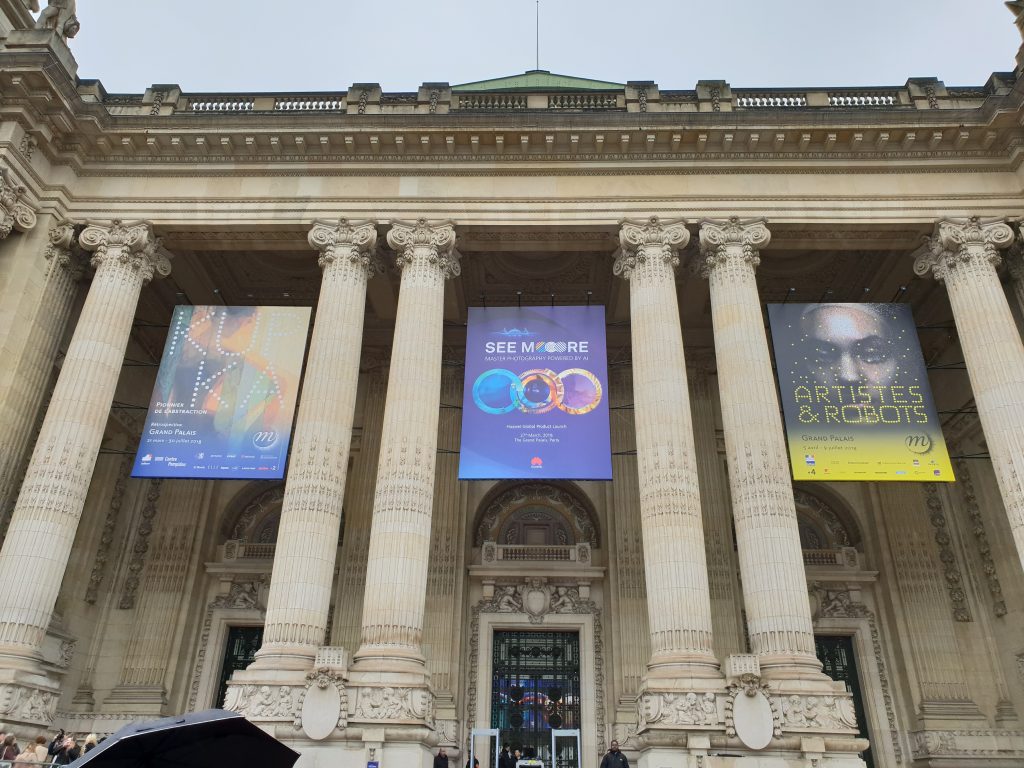
Let’s talk about the phones themselves, firstly. Both phones are new “full view” display phones – meaning the front is all-screen, or as much screen as possible. They’re both rocking the now-infamous “notch” design top-centre, and Huawei’s made the decision to keep a fingerprint scanner at the bottom of the front of the phone. This makes the screen aspect ratio 18.5:9.
The phones are both powered by Huawei’s latest Kirin silicon – the Kirin 970, launched by Huawei at IFA 2017. It features a neural processing unit that allows the P20 phones to run Huawei’s HiAI platform, offering AI-focused services to users and developers. This is supported by Android Oreo 8.1’s neural processing APIs and some of Huawei’s own APIs.
There’s a special “neural processing” version of Prisma that takes advantage of HiAI to reduce processing time and perform scene and object recognition and offer suggestions on which effects might best suit the photo you’ve selected, and snap-to-shop services supported by Amazon globally (in China, TaoBao) that links you to products in photos you snap.

The Huawei P20
Huawei’s P-series phones have gone from strength to strength in the last few years, and the P20 is another strong entry in the series. It’s coming into a market that’s increasingly crowded with strong entries from other major players, but Huawei is finally starting to get its head above the fray and see genuine interest from consumers in what they’re going to do next.
It’s interesting then that the P20 itself doesn’t seem to be where Huawei’s main focus is this year. It feels like it’s an update to the range at its expected size and price point, but the company’s real focus is on its big brother.
Still, the P20 is a genuine looker and will make a strong case for itself. It’s is a 5.8-inch 18.5:9 full view FHD+ screen with the notch design at top and fingerprint scanner at the bottom. The screen is using RGBW technology (the W is white) to make for a super vivid screen presence that looks good at many angles.
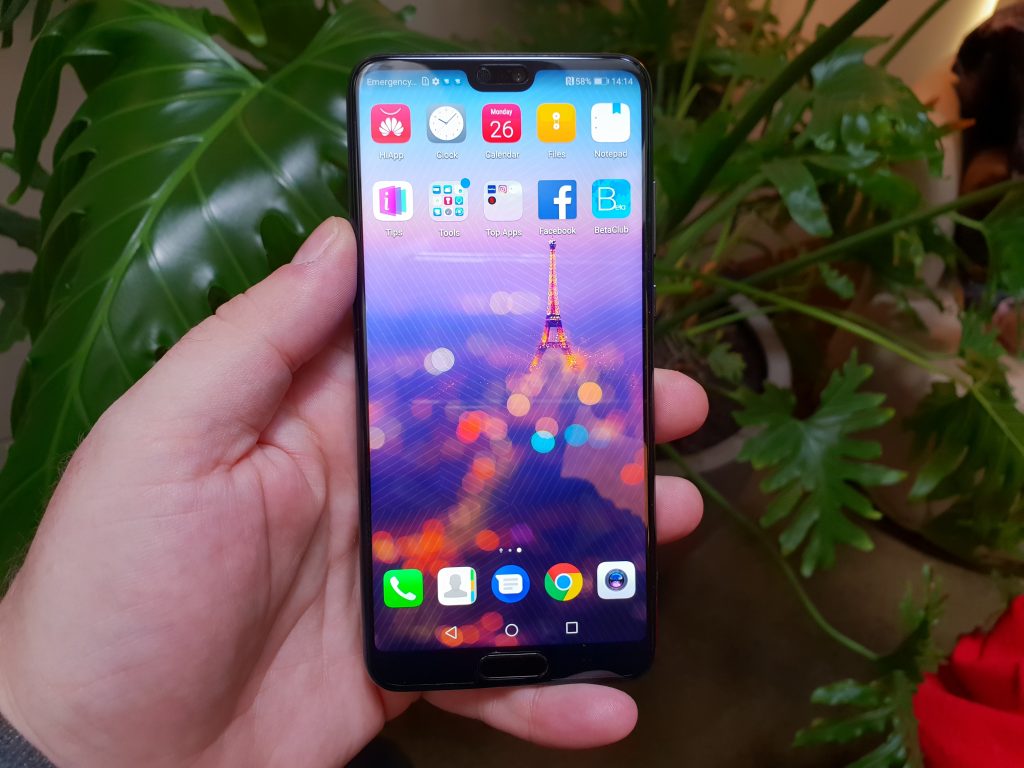
The P20’s camera is similar to last year’s setup with a Leica dual-lens Mono/RGB camera, featuring a 12MP RGB sensor with an f/1.8 aperture and a 20MP Mono sensor with f/1.6. There’s also a huge 24MP selfie camera on the front of the phone for high resolution selfies.
While the camera might feel like an incremental update, it’s notable that it’s entered DxOMark rankings at what would be the top (if not for the Pro) with an overall score of 102.

We can’t go any further without mentioning the gorgeous colours Huawei’s cooked up. While we saw HTC’s liquid surface design produce 2017’s best looking phone, it’s going to be hard to top Huawei’s much-leaked “gradient” designs here. While there are flat colours, the real eye catchers will be the two gradients – Pink Gold (which we haven’t actually seen yet), and Twilight, with its stunning blend of blue and purple.
There’s also a hidden trick in the settings for the display – you can eliminate the “notch” by turning the top status bar black.

While we haven’t had colours confirmed by market yet, there’s five options from the manufacturer – Black, Champagne Gold, Midnight Blue, Twilight (a blue/purple gradient), and Pink Gold (a white gold to light pink gradient).
Huawei enjoyed dropping a big bombshell during today’s presentation – the P20 is available now in some markets (around Europe) for €649 (about AU$1050).

The Huawei P20 Pro – see “mooore” with AI
While the P20 feels very much like the expected update to last year’s P10, it’s clear that the P20 Pro is where they’ve let themselves go a little bit wild.
The screen clocks in at a slightly larger 6.1 inches and a slightly taller 18.7:9 aspect ratio, but to call it a big brother to the P20 is probably doing it a disservice. Unlike the P20, the P20 Pro’s screen technology is OLED – meaning it’s Daydream certified.
It’s all about the camera. Huawei’s worked with Leica since the P9 for their smartphone cameras, and this one has been in the works since that initial partnership.
The leaks were true. The P20 Pro really does have three cameras – plus some extra party pieces – on its rear.

The P20 Pro Cameras – “Master photography powered by AI”
The last few years have been great for smartphone photography. Since Samsung introduced the Galaxy S6, we’ve seen a war break out on the low light photography front with an arms race on specs – every manufacturer wanting to leapfrog the others and bringing cameras with ever increasing apertures and always advancing specs.
As specs have advanced, there’s been a constant game of one-upmanship on the DxOMark ratings. Huawei’s P20 topped out the rankings, but the P20 Pro has smashed even that record with an overall score of 109.

Huawei’s partnership with Leica has been delivering great results on their camera for the last couple of years, and the company is now confident in telling us they’re redefining photography. It’s a bold claim (and not the first time they’ve made it), but in the P20 Pro’s case, its triple-lens Leica camera system really does seem to be genuinely moving smartphone camera technology forward.
The P20 Pro features three camera lenses (a 20MP mono lens, a 40MP RGB lens and an 8MP telephoto lens) and a colour temperature sensor that will help it tie together all the sensor data in a properly colour-balanced image. It’s all hooked up to a large 1/1.7inch sensor that lets more light in so you can capture brighter and better defined images in extreme low light conditions.
There’s a hybrid zoom system that allows Huawei to blend data from multiple camera lenses to give you better results at up to 5x zoom, and a laser autofocus system that works up to 3 meters away from the phone and will let you focus and shoot super quickly.
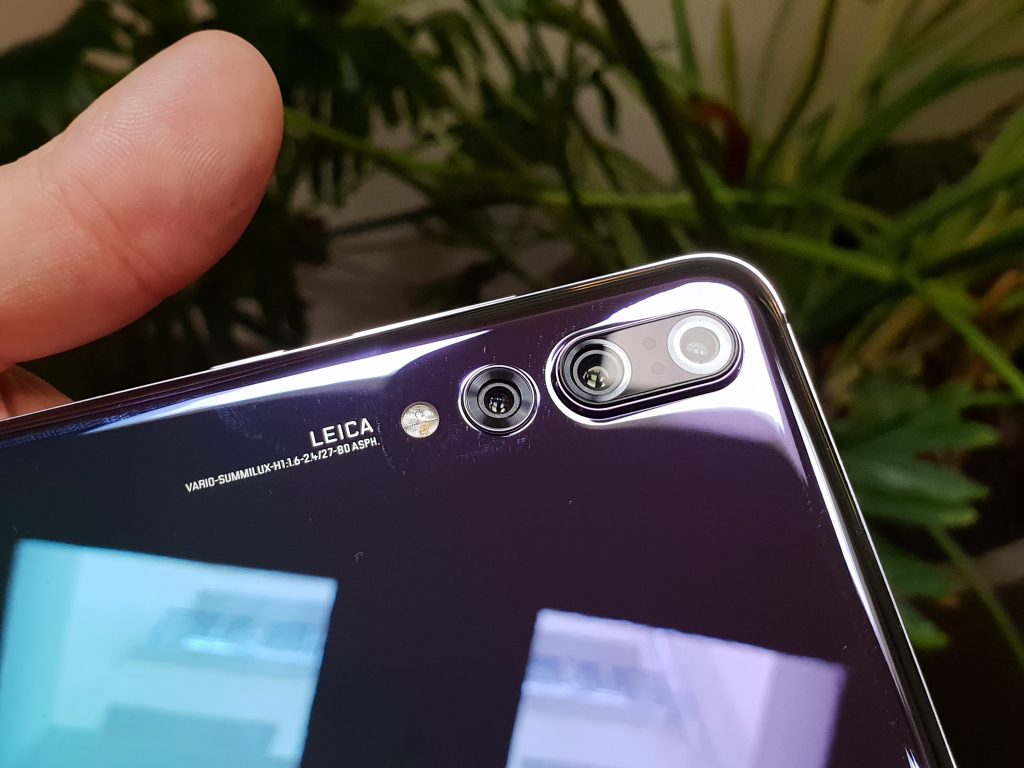
It also has an amazing top ISO of 102400 (most smartphones max out at around 10k). While you wouldn’t shoot a colour photo at that level of light sensitivity, it’s fantastic for black and white photography and there IS a dedicated sensor for shooting in this mode.
As competitors come up with Super Slow Motion video options for their cameras, you’d expect Huawei to meet the challenge, and they’ve done just that – the P20 Pro features a 960fps super slow motion option, similar to the Galaxy S9. Video resolution maxes out at 720p and the camera can also shoot a 0.2s burst of video.
Huawei is also using AI to augment its camera system to better detect whats in front of it and adjust the camera settings accordingly. The camera has been trained by professional photographers how to handle different situations, and an impressive effort has been made to pass that training on to the user. This effort began on the Mate 10, but has been expanded to handle 19 scene and subject types in the P20 Pro.
Some examples: the camera will overlay a horizon line on landscape images to try to help you shoot them straight, and offer a bounding box on group shots to help keep everyone in the centre of the image but keep some of the surrounding scene.
It’s also using AI to power a new stabilisation system that can hold a choppy video with lots of movement together in-shot, and will allow you to shoot a practically-unheard-of 6 seconds of long exposure photo handheld without the need for a tripod. This is a super bold claim, and one we’re looking forward to putting to the test.
The P20 Pro’s camera just shot it to the top of our most desirable device list. We love testing camera features, and this is jam packed with them.
The P20 Pro is coming to market in the same colours as the smaller P20 – there’s no Champagne Gold. We’ve had our hands on the Twilight version, and frankly it’s gorgeous. It’s due for release in the first week of April in Europe for €899 (about AU$1450). Australian pricing and availability hasn’t been confirmed yet, but Huawei is promising a competitive price point and a launch in the next couple of months.

We’ve got a P20 Pro review unit, in the no-less-stunning and its-fine-really midnight blue.
There was one more phone to be revealed, though…
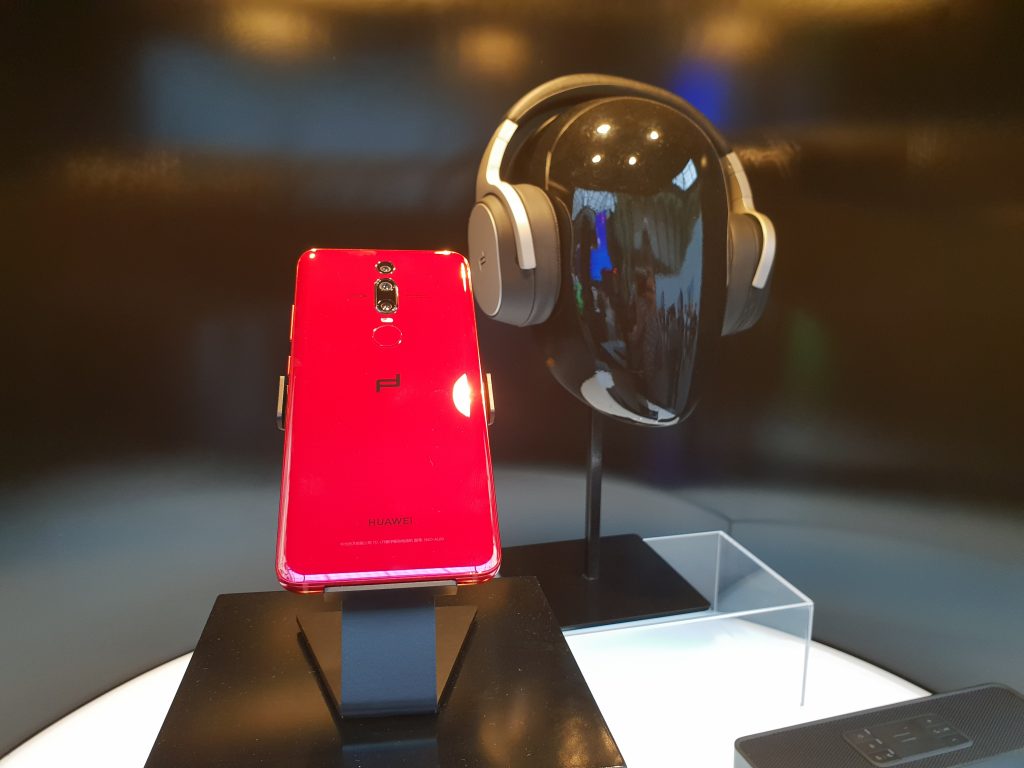
The Masterpiece – Mate RS, a premium P20 Pro
Huawei and Porsche Design have returned to the device on they first collaborated – the Mate – and delivered a new Porsche Design flagship in the Mate RS (so named to call to mind Porsche’s luxury RS series cars).
The Mate RS screams “premium”. It’s based on the Mate 10 body, but features the P20 Pro’s stunning triple lens camera array, and Huawei’s made the welcome change of moving the fingerprint sensor to the rear. As it turns out, there’s a good reason for that.
The Mate RS features an in-display fingerprint scanner, so you’ll be able to unlock your phone with a touch of your finger anywhere within the scanning region as you pick it up. This tech has been emerging over the last year, and it’s great to see it come to market from Huawei.
On the display front, the Mate RS is a 6-inch 2K screen behind 8-edge 3D curved glass. It’s also packing dual top/bottom SLS speakers with Dolby Atmos certification.
If you’re wondering why Qi wireless charging didn’t make an appearance in the P20 series phones, it’s because it’s in the Mate RS – it supports 10W wireless charging and Huawei’s SuperCharge technology.
While it’s running the same Kirin 970 processors, the Mate RS maxes the spec loadout with 6GB of RAM and 256GB or 512GB of storage.
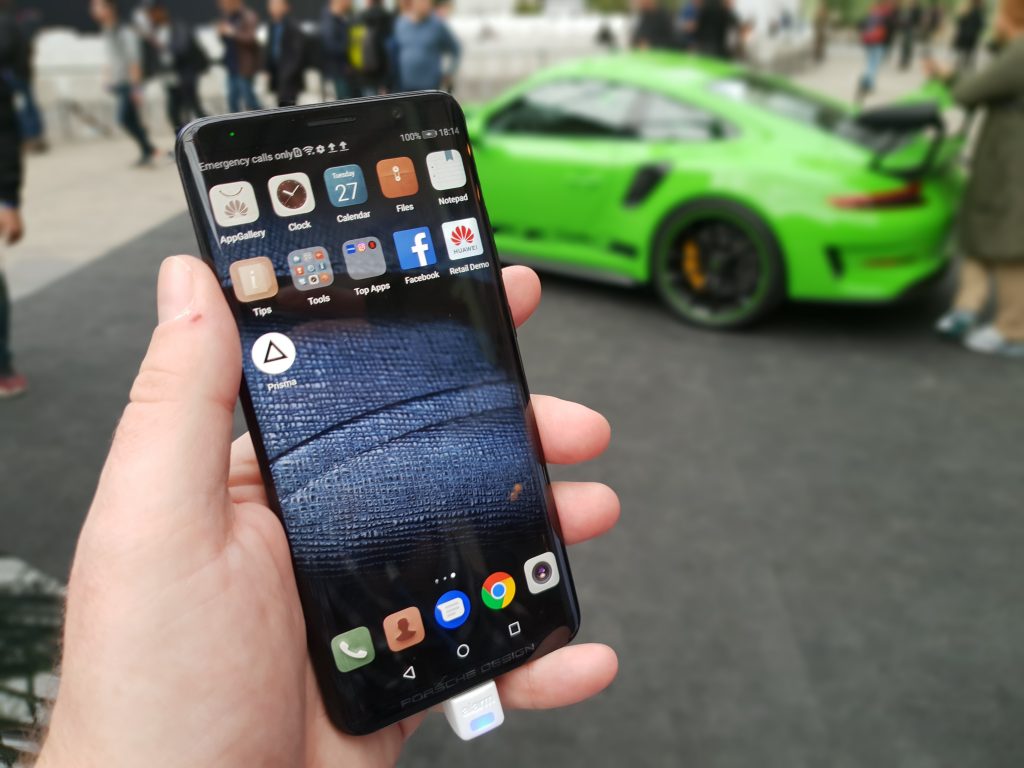
Huawei has confirmed that the Mate RS will be coming to Australia – unsurprising given that its previous Porsche Design model of the Mate 10 Pro actually sold out. There’s no pricing or availability to be known yet, but the European prices may give you a slight scare – the 256GB version clocks in at €1695 (about AU$2730) while the 512GB model cruises in at a cool €2095 (about AU$3370).
Jason traveled to Paris as a guest of Huawei for the P20 launch event.





Pricing for the pro model in UK is 60 pounds less than the s9 plus (around 110 aud). So the official msrp should be around the $1200 – 1250 dollar mark. It’s fair if the camera is what it’s touted to be. The normal p20 seems kinda pointless with the mate 10/mate 10 pro now costing less than what this phone will end up being.
Frightening prices really, however great phone and it shows increasingly that the Chinese manufacturers are ready to innovate and take some risks from a hardware perspective, once they get the software piece right there will be even more pressure on Samsung & Apple.
Yes it’s a lot of coin and probably out of reach of most of us ( if we wanted it ) , but I guess for the Elite Porche model owners it will be a drop in the bucket and the must have accessorie .
Pricing is simply ridiculous, I don’t care what the specs are